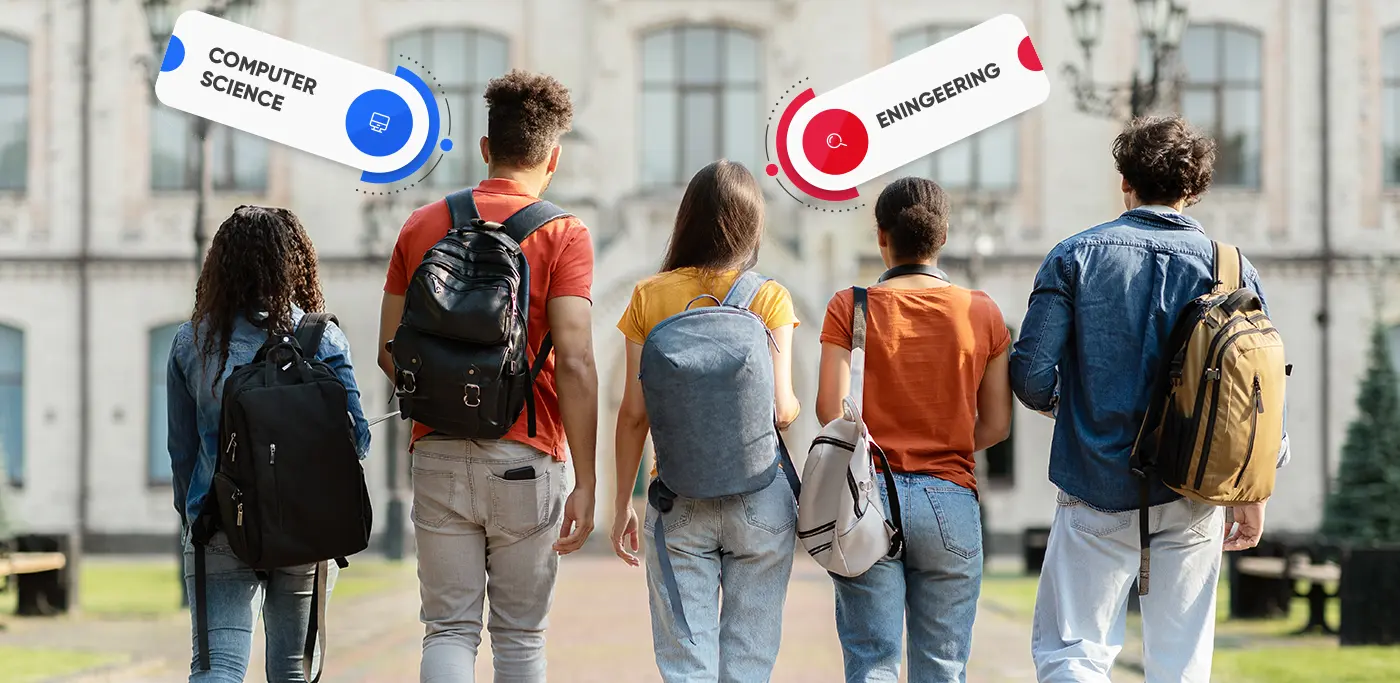Marketing automation done properly can build stronger relationships with prospective students, engage current students effectively, and maintain long-term alumni connections – while saving time and resources.
Sounds simple? So where do Universities go wrong? Many simply don’t know the art of what’s possible. In this article we will walk you through eight different ways that marketing automation can easily help you move away from un-personalised mass mailings, sending the same old campaigns, and struggling with manual processes.
Quick reference
- Creating and benefitting from a single student view
- Start by segmenting your student audiences
- Using student journey mapping
- Setting up behavioural triggered campaigns
- Save time and resources with drip campaigns
- Personalising your email campaigns
- Get into the habit of A/B Testing all your emails
- Use AI to give you analytics and optimisation insight
Whether you have a centralised or devolved marketing set up you are all still faced with high recruitment targets, keeping students engaged throughout their student lifecycle and decreasing your student drop off rate.
Therefore, it’s important to include marketing automation when building out your marketing strategy to help you become more efficient, improve your marketing reach and relevancy, and overall deliver the best and most impactful student marketing you can help you overcome these challenges.
Our 8 ways are grouped into the three core themes of data, campaigns and insights.

Getting the most out of your student data
1. Single student view
Everything starts with data. All the great things you’d like to achieve is all possible, but you have to start with the data.
You need to work from a single student view.
Your CRM is one important part, which tracks all details about your student’s profile, course information and day to day communications, but that is only piece of the puzzle.
The true benefit comes by enriching your CRM data with behavioural insights such as how are your students behaving and interacting on your website.
- What pages are they looking at?
- Which forms are they filling in?
- How many brochures are they downloading?
- Are they signing up for any upcoming events?
This enables you to get a clearer picture of the behaviours your students are showing.
However, it doesn’t stop there.
To have the most optimal single student view you want to also include engagement data. This is seeing which students are reading and interacting with your campaigns which can easily be understood by looking at your channel engagement metrics like email or SMS opens and clicks.
If you have any other dedicated data sources unique to your university then bring them into your single student view. The more complete the picture is the better success you’ll have to be able to build out truly personalised segments and build relevant and engaging campaigns.
That might sound scary but it’s all technically possible through using the right marketing automation tool. They will integrate and streamline all that data management into one student record and automatically keep it updated with the latest student profile, track their interactions and communication history so you always have the most ‘up to date’ single student view.
Which I’m sure you can all agree is far less stressful than managing multiple data sources and even trying to work off different excel sheets!

2. Segmenting student audiences
From your single student view, you can use automation tools to help you create the most ideal segments.
Not only breaking down your database into prospective students, students, alumni, donors or stakeholders, but the ability to add more relevant layers to these segments which is the ideal foundation for ensuring you are delivering personalised and relevant messaging to each individual.
Such as breaking down students depending on criteria such as academic interests, geography, demographics or stage in the recruitment funnel.
Much of this can be done manually exporting student information and manually working across platforms or excel sheets to create ideal segments for specific campaigns, but having these segments set up in your marketing automation platform, automatically updating in real time with the relevant students that fit the criteria you set for your segments, is much less time consuming and stress free.
This enables you to act faster to get the relevant campaigns or communications out that you need.

3. Student journey mapping
From your single student view automation can also be used to help you understand where all your students are across the entire student journey from initial contact right through to alumni.
By understanding where your students are on their lifecycle with your university and having these as automated segments, means at any point in time you’ll always have the most up-to-date view of how many students are at each stage.
This is an essential component for delivering tailored communications to your students to make sure they are receiving the best and most relevant information based on the stage of their journey.
Such as understanding which are your brand-new students joining in a few weeks that need your ‘welcome journey’, through to students who might be leaving the University in a few weeks due to their course completion and need a ‘leaving and next steps journey’.
But this can also help you identify where there are students drop off’s enabling you to take proactive steps to stop drop off’s and encourage engagement or recruitment.
Such as identifying if you have a growing number of students in your ‘offer accepted’ lifecycle stage, but then a reduced number in ‘new starters’ lifecycle stage.
You can look to see what campaigns you could implement to stop the number of students dropping out before University starts with campaigns focused on building momentum and excitement of what’s to come.

Automating campaigns to drive the best student experience
4. Behavioural triggered campaigns
Marketing automation is the perfect tool to help you setting up campaigns that can run effortlessly in the background, whist helping you with achieving your conversion targets.
This most common type of automated campaigns are triggered based on a behaviour on your website, whether that be a form completion, starting an application process, a brochure download, or visiting a specific webpage.
In each of those scenarios the prospective student can start to automatically receive relevant follow up communications based on their behaviour which helps keep them engaged in that moment and an opportunity to draw them back to completing the conversion activity you require.
For example, to reduce the number of lost leads and increases conversions you can automatically send reminders to students who have started but haven’t completed an application, as well as automate communication back to the student to keep them updated on their applications such as next steps or when decisions have been made.
The beauty of behavioural automations is that your prospective student trigger the communications themselves, by their behaviour, meaning those messages are far more relevant and impactful as it is unique to what they have just done, vs it being a broad message you are sending out to a group of students with content that you feel will be relevant to them.
5. Drip campaigns
Automation can be used to help keep your students engaged by regularly drip feeding them content and information that would be relevant to them from initial enquiry to application. And this can be set up through automated drip campaigns.
Rather than having to create and send your emails individually each time, you can easily set them up all at once and schedule them to automatically send along a nurture timeline that you decide.
Automated drip campaigns can be a great way to guide students through the decision-making process with scheduled emails that offer valuable information over time.

6. Personalising your emails
To understand the true benefit of personalised communications, you need to move from viewing students just as contact data – to being real people with individual needs, wants, and emotions.
And personalisation done right can help to ensure the campaigns they receive from you relate to their needs, uncover their wants and build powerful positive emotions.
Many marketers can shy away from personalisation due to the worry of the time and effort it will take setting up multiple emails. This is where automated personalised content takes that hassle away from you.
It is also worth remembering that in their consumer world they are expecting personalised experiences from those brands, so the same applies to their interactions and journey with you as a university.
Personalisation can be achieved in many ways within your emails and has dramatically moved on from just personalising using their first name, which is now just a polite assumption that your students will have when receiving emails from you.
Using all the wonderful information you have collected on each student within their single student view, you can build the perfect email experiences for your students based on the data you know about them.
By using functionality such as dynamic content, your one campaign could easily become personalised to each individual who receives it. Dynamic content can automatically swap out content blocks within your emails based on data rules or segments criteria.
Your one campaign focusing on course updates for example can be sent to multiple groups of students and the content block on course information can easily be switched out depending on which course the student is taking, or looking to take.
This reduces the need to send multiple course update emails, saving you a huge amount of time and effort.

Learning and optimisation
7. A/B Testing
Testing is such a critical part of a marketers toolkit that is often overlooked, and another great area where automation can help.
You can test different subject lines, content, calls to action, times of sends and even creatives to improve performance and maximise engagement for each of your segments.
For example you may find using more specific language in CTAS such as ‘Read feedback from past students’, vs a generic ‘Find out more’ produces a higher click through and engagement success.
Or sending an application deadline reminder email may get better completion send at the end of the day, vs the morning, if prospective students are more likely to be at home and in a position to complete what is needed in the evenings.
Each will be different to each University and their students and it’s also important to remember to continually test as what may match a behaviour now, may change in 6-12 months.
Also, some marketers worry about the outcome of tests for the segment that receives the less popular, unsuccessful or less engaging variant but to reduce this number use functionality such as sample testing.
This is where your marketing automation platform will send out your two variations to small sample of your segment to see which is the most successful and then automatically send that variant to the rest of your segment.

8. Analytics and optimisation
Tracking campaign metrics through automated reporting within your marketing automation platform, such as engagement metrics like open rates, click through rates and conversion rates, are all great in helping you understand what is working and optimise future campaigns.
However the advent of AI has welcomed an extra dimension to reporting that every marketer needs. By using AI based reporting suites this can automatically surface to you trends, outliers and correlation between data points that you never knew existed.
The AI can automatically be analysing all your student segments, behaviours, interactions and engagements in the background and present to you opportunities, areas to look at and inspiration for what to do next.
It could identify a cross correlation of students which study a particular course and have an interest in a particular sport, or trend in the number of emails sent to complete an application based on the course they are taking.
The great thing about AI based reporting is that it can help you uncover things you wouldn’t have spotted yourself (or only possible with teams of data analysts) which then allows you to place your valuable time and effort into working on the messaging and creativity in how you can maximise that opportunities or address that specific challenge.

Marketing automation for Higher Education is crucial
Overall ensuring you incorporate marketing automation into your higher education marketing strategy is crucial because it helps streamlines your process, improve where you can spend your time and effort and helps you gain more reach with your campaigns and messages.
For your students it can them to feel more engaged with your university by them receiving more relevant communications to help them through this important journey – enhancing their overall University experience.
Which helps not only right from the enquiry, but helps maintain them as a life long engaged alumni for years to come.
Ready to take your next steps into personalised email marketing strategies?
Visit our Higher Education Email Marketing page and see how we can help you turn personalisation into increased enrolments and engagement. Or click below to get started and… Talk to one of our experts!
Enjoyed this article? Sign-up to receive updates






